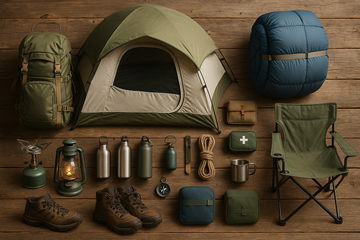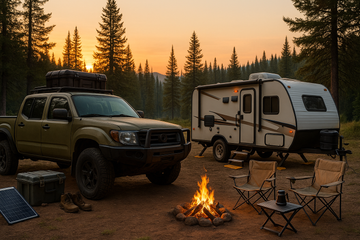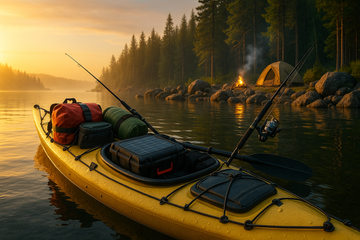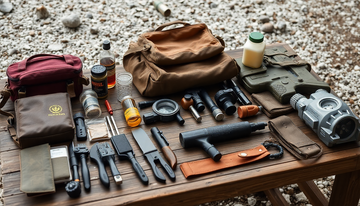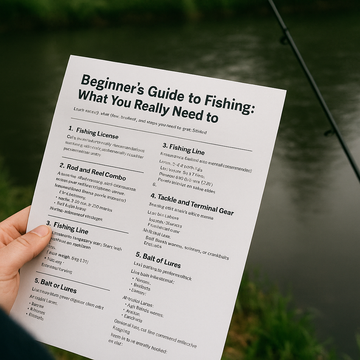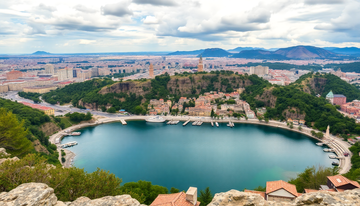Introduction
In an unpredictable world characterized by climate change, natural disasters, and societal shifts, survival skills are becoming increasingly vital. The art of survival isn't just about hoarding supplies; it's about mastering a set of essential strategies that enable you to navigate challenges efficiently and effectively. In 2025, modern survivalists need to cultivate a diverse skill set that encompasses physical endurance, mental agility, and community engagement. This comprehensive guide will delve deep into the essential strategies that every survivalist should master to thrive in today's world.
Understanding the Modern Survivalist
Survivalism has evolved from a niche interest into a necessary skill set in today's society. The modern survivalist approaches challenges with a mindset that combines preparation with adaptability. Here are some key characteristics:
- Resourcefulness: The ability to make the most of available resources is paramount. This includes everything from using natural materials for shelter to leveraging technology for communication.
- Adaptability: Survivalists must be able to pivot their strategies based on the situation at hand, whether it be a natural disaster, economic downturn, or community crisis.
- Community-oriented: Building networks and relationships with others enhances not just individual survival but collective resilience.
- Continuous Learner: Modern survivalists are committed to lifelong learning, continually seeking new knowledge and skills.
Essential Survival Skills
To effectively navigate the challenges posed in 2025, survivalists must develop a diverse toolkit of essential skills:
-
Outdoor Skills:
- Fire-making: Learning various methods to create fire, including friction, flint and steel, and modern fire starters.
- Shelter-building: Understanding how to construct temporary shelters using natural materials, tarps, or emergency blankets.
- Foraging and Hunting: Identifying edible plants and understanding basic hunting techniques to procure food in the wild.
- First Aid: Knowing how to treat injuries using basic first aid kits and natural remedies, and understanding when to seek professional medical help.
- Self-defense: Being prepared for potential threats by learning self-defense techniques, situational awareness, and de-escalation tactics.
- Water Purification: Understanding methods to ensure safe drinking water, such as boiling, filtration, and chemical purification techniques.
- Navigation: Mastering both traditional navigation skills using maps and compasses, as well as modern GPS technology.
Technology and Tools for Survival
The integration of technology into survivalism has enhanced the ability to prepare and respond to crises. Here are some tools and technologies that every modern survivalist should consider:
- Multi-tools: Compact devices that combine various tools, such as knives, screwdrivers, and pliers, into one handy tool.
- Water Filtration Systems: Portable water filters that provide access to safe drinking water from natural sources.
- Solar Chargers: Sustainable energy solutions that allow you to charge electronic devices using solar power, crucial for maintaining communication.
- Emergency Communication Devices: Satellite phones or two-way radios that can function even when traditional networks fail.
- Portable Power Banks: To keep essential devices charged during extended power outages.
- Survival Apps: Mobile applications that provide vital information on first aid, navigation, and foraging.
Mental Preparedness
Survival is as much a mental challenge as it is a physical one. Here are several strategies to enhance mental resilience:
- Mindfulness Practices: Techniques such as meditation, deep breathing, and yoga can help maintain focus and clarity during stressful situations.
- Problem-solving Skills: Engaging in puzzles, games, or simulations that challenge your critical thinking and decision-making abilities.
- Stress Management: Learning coping mechanisms to deal with fear and anxiety, including journaling or talking with a support network.
- Visualization Techniques: Practicing scenarios mentally to prepare for potential crises, helping you remain calm and collected when faced with real challenges.
Building a Survival Community
Isolation can be detrimental in survival situations. Building a community can significantly enhance your chances of survival and well-being:
- Networking: Connect with local survival groups, online forums, and social media communities focused on preparedness and survival skills.
- Skill Sharing: Host workshops or training sessions to teach and learn survival skills, fostering a culture of mutual support.
- Collaborative Planning: Work with your community to create emergency plans that address local risks and resources, ensuring collective safety and preparedness.
- Local Resources: Identify local resources, such as food banks, shelters, and emergency services, to strengthen community ties.
Long-term Sustainability
Survival is not just about short-term strategies; it’s also about long-term sustainability. Here are some approaches:
- Gardening and Agriculture: Learning how to grow your own food can provide a sustainable source of nutrition.
- Permaculture Principles: Implementing sustainable agricultural practices that work with nature to create self-sustaining ecosystems.
- Bartering Skills: Understanding the value of skills and resources can be essential in a post-crisis economy.
- Renewable Energy Solutions: Investing in solar panels or wind turbines to create an independent energy source.
Emergency Preparedness Kits
Having a well-stocked emergency preparedness kit can be lifesaving in a crisis. Here’s what to include in your kit:
- Water and Water Purification: At least one gallon of water per person per day for a minimum of three days, along with purification tablets or filters.
- Food Supplies: Non-perishable food items, such as canned goods, dried fruits, nuts, and energy bars, enough for several days.
- First Aid Supplies: Comprehensive first aid kit that includes bandages, antiseptic wipes, pain relievers, and any necessary medications.
- Tools and Multi-tools: A sturdy multi-tool and basic tools for repairs and construction.
- Personal Hygiene Items: Soap, hand sanitizer, toilet paper, and other hygiene supplies.
- Clothing and Blankets: Weather-appropriate clothing and thermal blankets for warmth.
- Emergency Radio: A battery-operated or hand-crank radio to receive emergency alerts and information.
Conclusion
Mastering the art of survival in 2025 requires a multifaceted approach that integrates traditional skills with modern technology, mental preparedness, and community engagement. By cultivating these essential strategies, you can navigate the uncertainties of the future with confidence and resilience. Embrace the journey of becoming a modern survivalist, and equip yourself for whatever challenges lie ahead. Remember, survival is not just about enduring; it’s about thriving in adverse conditions and contributing positively to your community. Prepare today, and you’ll be ready to face tomorrow.
